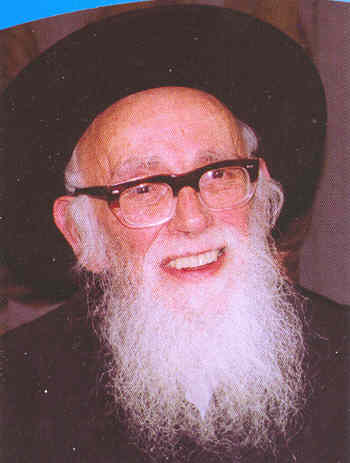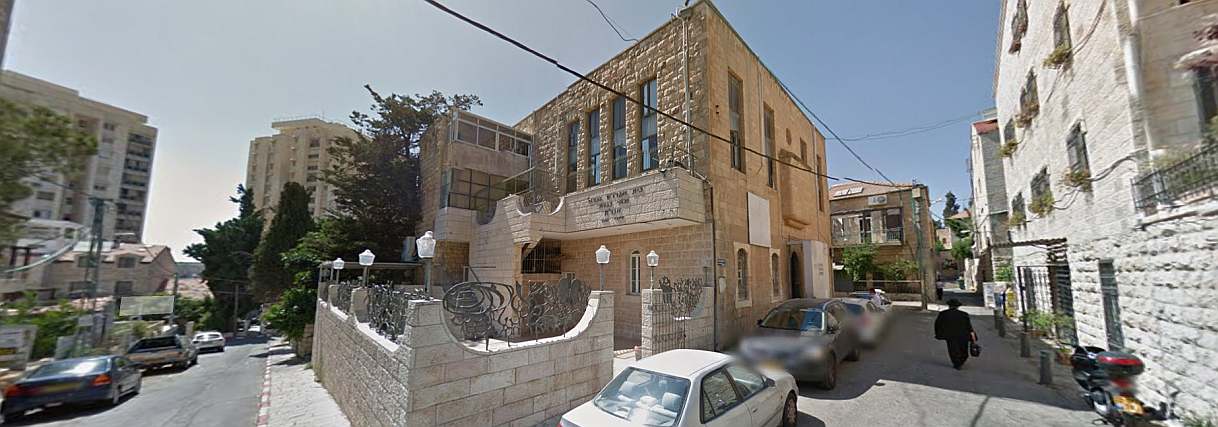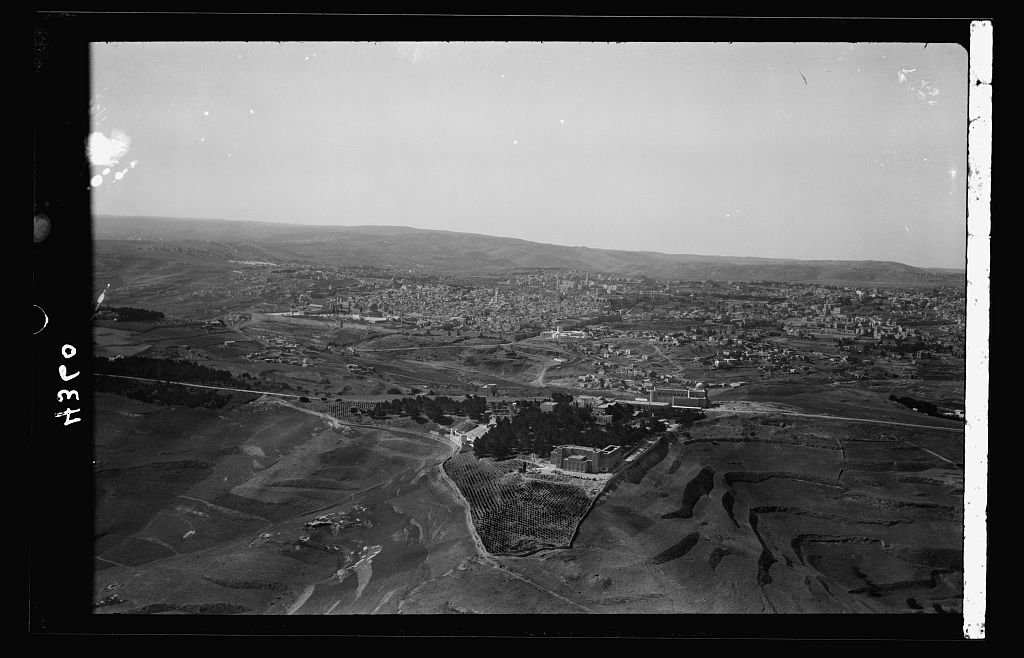| | NEWS
"The Ner Ma'arovi Has Gone Out!" — The Petiroh of HaRav Shlomo Zalman Auerbach, zt'l
by Moshe Musman

This series of articles about HaRav Shlomo Zalman Auerbach zt"l was originally published in 1995 (5755), soon after the petiroh.
For Part II of this series click here.
Through the early hours of the morning of the twentieth of Adar I, 5755, crowded buses, which had travelled from every part of the country, were arriving in Yerushalayim. Crowds collected around the modest house long before the levaya was to due to begin. Towards eleven thirty, new streams—which then became rivers—of people flocked towards Sha'arei Chesed, an old neighborhood located near the center of the new city of Jerusalem.
Many of them were taking the same path they had taken many times before, towards Rechov Porush and the flight of stairs leading up to the home of HaRav Shlomo Zalman Auerbach zt'l. All the streets within a wide radius around the house were soon packed solid with people standing on the pavements, roads, balconies, even perching on roofs. The crowds flowed wherever they found space to enter, as water does when it can no longer be contained in the vessel which holds it. The late winter morning was unusually warm and for a few minutes the entire assemblage stood still, for the most part in silence — shocked, stunned silence.
How could it be that this man, who was so much to so many, who touched chords in the souls of every single Torah Jew, had been plucked from among us? Suddenly, after a brief illness, he was gone. What world was this, that we were now entering? A world without Reb Shlomo Zalman — could it be? How, how could it be?
"...Our teacher—I am not yet able to use the words olov hasholom or zeicher tzaddik livrocho when speaking of him." (From a hesped delivered the following day by HaRav Yehuda Addes, rosh yeshivas Kol Yaakov)
The bier was brought out of the house. As the sounds of crying and weeping rent the air, Reb Shlomo Zalman's brother, HaRav Avrohom Dov Auerbach, the rav of Yerushalayim's Bakka neighborhood, read, in a voice choked with grief, those parts of the niftar's testament which held a message for the general public.
HaRav Shlomo Zalman zt'l, stipulated that the stone over his grave was to be of the standard type and no higher than those of his parents. He gave permission for the addition of the inscription, "He raised talmidim in Yeshivas Kol Torah
and disseminated Torah to the public." If anyone were to wish to eulogize him, he earnestly requested them to be brief and not to speak in his praise. They should rather arouse their listeners to the love of Torah, the fear of Heaven and improvement of their deeds and their behavior. There followed a reiteration of his request that speakers refrain from praising him, "for I suffered from this during my lifetime, especially from the exaggerations which have recently been written about me. I repeat my previous request not to speak at length and weary the listeners."
The bitter weeping reached a new crescendo as HaRav Auerbach read his brother's instructions in the event that his condition were to deteriorate during his final years and become chronic. He requested that his relatives place him in "a good institution, for I do not want to be a trouble and a burden to my family."
The Gra Shul in Shaarei Chesed where HaRav Shlomo Zalman davened

"Ribono Shel Olom! My dear brother! For you, it was permitted to carry the burden of your entire family, to marry off orphans, to be the address for every person who was bitter of heart, to trouble yourself with burdens...but from us you ask that we place you in a good institution! Shlomo, Shlomo...now you will take up residence in a "good institution" within the gates of Gan Eden which will open for you..."
HaRav Shmuel Auerbach, rosh yeshivas Ma'alos HaTorah, then eulogized his father, dwelling upon his great love of Torah, and only Torah. It was a love to which he had totally dedicated himself and that had sustained him through periods of starvation and difficulty, as well as those of relative tranquility. The supremacy of halacha in guiding every aspect of his conduct, the tremendous efforts which he invested in his prayers, his humility, his love of spreading Torah, his admonition that Torah be learned only from those who were themselves yirei Shomayim, were all mentioned briefly themes that would be recalled in the ensuing days and weeks in the course of the eulogies that were delivered all over Yerushalayim and in the rest of the country.
HaRav Avrohom Dov Auerbach, the rav and av beis din of Tiveria (a son of R' Shlomo Zalman with the same name as his own uncle), then spoke. He bemoaned the "world of truth" that had disappeared with his father's petiroh, a "world of truth" that was none other than the "dalet amos of halacha," everything outside of which deserved to be set aside, for one reason or another. He quoted a remark his father had made, "I never had any other ambition or any pleasure from anything besides Torah and spreading Torah."
The truthfulness that had been the theme of his entire life was such that he would discern the inherent falsehood in things that we were quite satisfied with labelling as truth. Yet his truth had always gone hand in hand with peace and harmony on both the interpersonal and the communal levels. Throughout his life he had carefully maintained the balance between truth and peace, seeing to it that the truth never shattered the peace, and that preservation of peace never involved any compromise of the truth.
Although his father had requested that he not be praised, HaRav Auerbach continued, it was certainly permitted for him to praise Klal Yisroel, who were bound to his father with thick bonds of love. Jews, great and small, from every circle and every community, not to mention his thousands of talmidim, saw him as their father.
"My father used to express his amazement, `Why do they all come to me?' `And Moshe did not know that the skin of his face shone..'" Like Moshe Rabbenu, he himself was unaware of the radiance of his face, while those searching for the light flocked to him. "That light shone far afield and Klal Yisroel felt it... Yerushalmi Jews, of whom my father was one, the yeshiva world, the chassidishe world, the oriental communities, anyone, anywhere in the world who had a connection to Torah and mitzvos, belonged inside his dalet amos."
The youngest son, Rav Boruch Auerbach, who, together with his wife, spent the previous twelve years caring for his father in his home, then took his leave, mentioning the great respect and boundless love his father had shown to every single visitor to the house, whether an ordinary Jew from the rank and file or a great person, young or old. The vast crowd of mourners, amongst whom were to be seen roshei yeshiva, admorim, dayanim, rabbonim and mechanchim from the length and breadth of Eretz Yisroel, spent the next three and a half hours accompanying the niftar to Har Hamenuchos, where there were renewed expressions of bitter grief as he was buried.
Klal Yisroel indeed felt that a light had gone out—a light that was akin to the ner ma'arovi of the Menora, the miracle of whose constant burning testified that the Shechina rested on Klal Yisroel. The sense of bereavement was universal. At the levaya, people's faces reflected grief, loss and devastation. Tears flowed unchecked from many pairs of eyes and many hands performed keriah. The intensity of the feelings led HaRav Addes to say the following day, that it had been a gathering of three hundred thousand individual mourners.
Yet at the same time, there was a feeling of unity. Klal Yisroel in its entirety was gathered together in mourning. The sense of common purpose was itself uplifting and could perhaps afford a shred of comfort. What was it that bound them all together? How many could have known him personally? Perhaps a few thousand? Yet the grief experienced by everyone who was there, as well as many who were not, was far in excess of what could have been prompted by personal acquaintance. Even those who didn't know him were bound to him with bonds of love. For the bonds binding Klal Yisroel to HaRav Shlomo Zalman were not formed from mere emotionalism. They were spiritual bonds, joining neshamos to a living sefer Torah.
During the days and weeks following the levaya, the communal mourning was given expression at numerous gatherings in yeshivos, batei medrash, batei knesses, schools and seminaries where eulogies were delivered, in the seemingly endless personal anecdotes and stories which circulated between friends and neighbors and in a flood of newsprint, as columns and pages in religious periodicals were filled with mourning notices, articles, appreciations and reminiscences.
What were people mourning? His humility and self effacement? His fear of Heaven? His righteousness? His piety? His honesty and sincerity? His counsel and advice? His kindness? His warmth, friendliness and sensitivity to others? His genius? His vast and crystal clear Torah knowledge? His halachic guidance and the proof it furnished that Torah contains all that is necessary for the Torah Jew living in a world of modern technology? His prayers on behalf of his fellow Jews? His patience and forbearance? His continuing, to the very end of his life, to be a source of instruction, inspiration and guidance?
These were some of the facets of his character that were dwelt upon, each speaker or writer expressing his own feelings. While some traits may have been dwelt upon more than others, a glance at the first mishna in the sixth perek of Avos will show that all of these traits are common to a man who learns Torah lishmoh. Torah was the source of everything he was and Klal Yisroel knew it.
The gemora (Kesuvos daf 17) likens the occasion of the departure of a talmid chochom from this world, when Torah is taken away, to ma'amad Har Sinai, when Torah was given. Until there are six hundred thousand people attending, Torah learning is set aside in order to attend the levaya of a Torah scholar — for a marbitz Torah, there is no limit. We saw this analogy taken further. Chazal tell us that at Har Sinai, Klal Yisroel were united, "like one man, with one heart," in order to receive the Torah. On the twentieth of Adar I, Klal Yisroel stood together when HaRav Shlomo Zalman was taken away.
Jerusalem in 1931, when HaRav Shlomo Zalman was 21

The Vision Of A Gaon
HaRav Shlomo Zalman's zt'l name travelled far and wide—far beyond the halls of Yeshivas Kol Torah in Yerushalayim's Bayit Vegan neighborhood. His seforim, articles and halachic rulings are famous in every corner of the globe where Torah Jews reside and from whence his counsel was sought.
As mentioned, every maspid, every writer and every individual had their own personal appreciation of HaRav Shlomo Zalman. While some placed more emphasis on his middos, others on his many acts of chesed or his halachic rulings, the very act of singling out aspects of what he was is, in a way, a distortion.
The foundations of his spiritual edifice and the materials of its construction were love of Torah and of spreading Torah, as stressed by his sons in their hespedim. Therefore, in order to sketch the barest outline of his unique approach and to gain a key to a correct appreciation of the more widely known aspects of his life, we must search within the walls of the beis hamedrash which was graced by his noble, refined personality and his crystal clear shiurim for close to fifty years. Those shiurim, through which he acted as a prism, focusing the Torah's pure light upon his talmidim, reveal something of his great character, every facet of which is deserving of closer study.
While future parts of our account will examine his life, the beauty of his ways and his halachic rulings, we begin with a picture of the marbitz Torah, prepared by his talmid, Rav Moshe Tuvia Dinkel. Through a recollection of the shiurim of HaRav Shlomo Zalman zt'l, which were especially beloved by their deliverer as well as by their hearers, we can attempt to build a true picture of his life and approach. An appreciation of HaRav Shlomo Zalman zt'l is not easily achieved. The following paragraphs are therefore mere pointers, a framework within which to correctly assess all his other activities.
Straight Thinking, Commonsense and Logic
by Rav Moshe Tuvia Dinkel
"The rishonim and acharonim z'l, are praised only because of their straight thinking," HaRav Shlomo Zalman would repeat to his talmidim, in the name of HaRav Chaim Volozhiner zt'l. "The principle part of Torah learning consists of proposing logical ideas and of differentiating [between apparently similar cases,"] he read out in the middle of a shiur, as he asked the talmidim to find the solution to the problem of two halochos which seemed identical. He never ceased to stress the importance of clear thinking and healthy logic.
A "sevoro," an idea, to HaRav Shlomo Zalman, did not mean just any abstract thought, plucked from the air. It meant a cogent, reasoned idea that was both logical and sensible—a clear, straight thought. In his mind, he weighed and balanced every idea that was presented to him. If it was sensible, logical and practical, it received his stamp of approval as a straight thought. If however, it was either not logical, not reasonable or would not make sense in concrete, practical terms, then however well it purported to solve the problem at hand, his mind could not accept it as a straight thought.
During the shiur, HaRav Shlomo Zalman would refrain from spending time on points which did not directly concern the plain meaning of the sugya. He would read the gemora, Rashi and Tosafos slowly, with a clear and beautiful diction, explaining how their meaning was to be understood both in the light of and without, the comments of the Maharsh"A.
He would quote the rishonim, explaining their words and showing which points in the sugya had prompted their comments. He would also cite the major acharonim such as the Pnei Yehoshua, Rabbi Akiva Eiger, the Oruch LeNer and the Keren Oroh, whose comments open up the depth of the sugya's plain meaning. His constant object when citing their remarks would be to demonstrate the ramifications of their comments at all the various stages and according to opinions in the sugya.
He always kept HaRav Elchonon Wassermann's Kovetz Shiurim close at hand, hardly omitting to cite a single passage and he would often go through an entire sugya, explaining each step both "according to Reb Elchonon" and "not according to Reb Elchonon." Whatever added to an appreciation of the sugya's plain meaning, had a place in the shiur, whilst the overriding concern was clear thinking, commonsense, logic and the differentiation between one halocho and another.
One talmid, who was a little upset because HaRav Shlomo Zalman hardly ever discussed the teachings of the great roshei yeshiva of recent generations, decided to act a little presumptuously. After a shiur during which the Rosh Hayeshiva had discussed one of the sugya's pivotal aspects, he approached HaRav Shlomo Zalman and said, "Reb Shimon says so-and-so," intending to show that the entire issue could be resolved according to his comments.
He had not expected the reaction which he received. "I know what Reb Shimon says," said HaRav Shlomo Zalman. "But don't tell me what Reb Shimon says. You explain to me what you think the answer could be!"
(Indeed, in the course of the hespedim, mention was made of the fact that HaRav Shlomo Zalman once remarked that he had been through Reb Shimon's major work, Sha'arei Yosher.) In the course of their conversation, HaRav Shlomo Zalman had also demonstrated to the talmid who had quoted Reb Shimon, that he had not even understood Reb Shimon's comments correctly.
He could not bear to hear talmidim express difficult abstract ideas which they were very far from comprehending. In the year they spent with him, he would train his talmidim to adopt a fundamental, clear headed and sensible understanding.
End of Part 1
|




